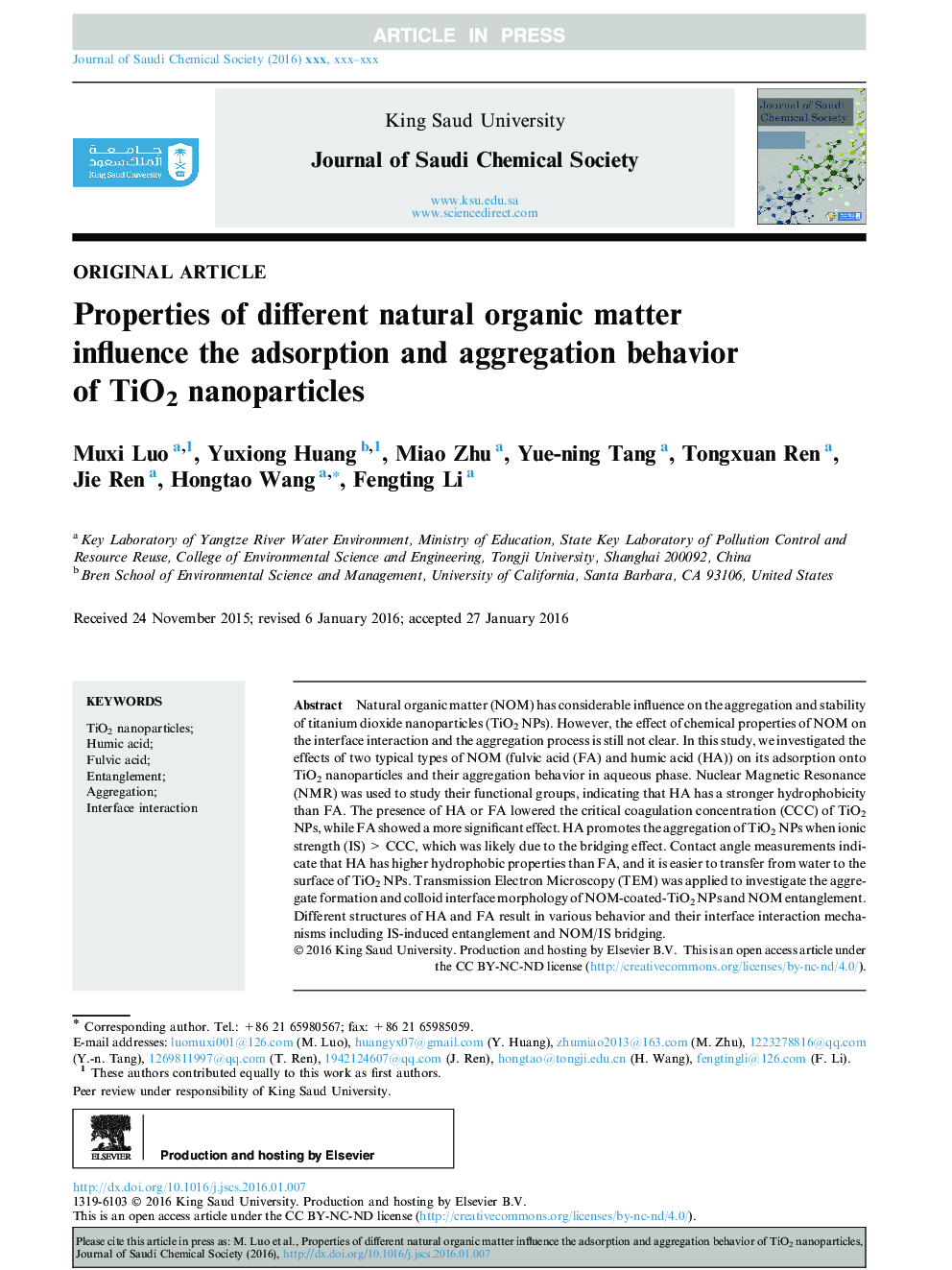| Article ID | Journal | Published Year | Pages | File Type |
|---|---|---|---|---|
| 6669878 | Journal of Saudi Chemical Society | 2018 | 9 Pages |
Abstract
Natural organic matter (NOM) has considerable influence on the aggregation and stability of titanium dioxide nanoparticles (TiO2 NPs). However, the effect of chemical properties of NOM on the interface interaction and the aggregation process is still not clear. In this study, we investigated the effects of two typical types of NOM (fulvic acid (FA) and humic acid (HA)) on its adsorption onto TiO2 nanoparticles and their aggregation behavior in aqueous phase. Nuclear Magnetic Resonance (NMR) was used to study their functional groups, indicating that HA has a stronger hydrophobicity than FA. The presence of HA or FA lowered the critical coagulation concentration (CCC) of TiO2 NPs, while FA showed a more significant effect. HA promotes the aggregation of TiO2 NPs when ionic strength (IS)Â >Â CCC, which was likely due to the bridging effect. Contact angle measurements indicate that HA has higher hydrophobic properties than FA, and it is easier to transfer from water to the surface of TiO2 NPs. Transmission Electron Microscopy (TEM) was applied to investigate the aggregate formation and colloid interface morphology of NOM-coated-TiO2 NPs and NOM entanglement. Different structures of HA and FA result in various behavior and their interface interaction mechanisms including IS-induced entanglement and NOM/IS bridging.
Related Topics
Physical Sciences and Engineering
Chemical Engineering
Chemical Engineering (General)
Authors
Muxi Luo, Yuxiong Huang, Miao Zhu, Yue-ning Tang, Tongxuan Ren, Jie Ren, Hongtao Wang, Fengting Li,
